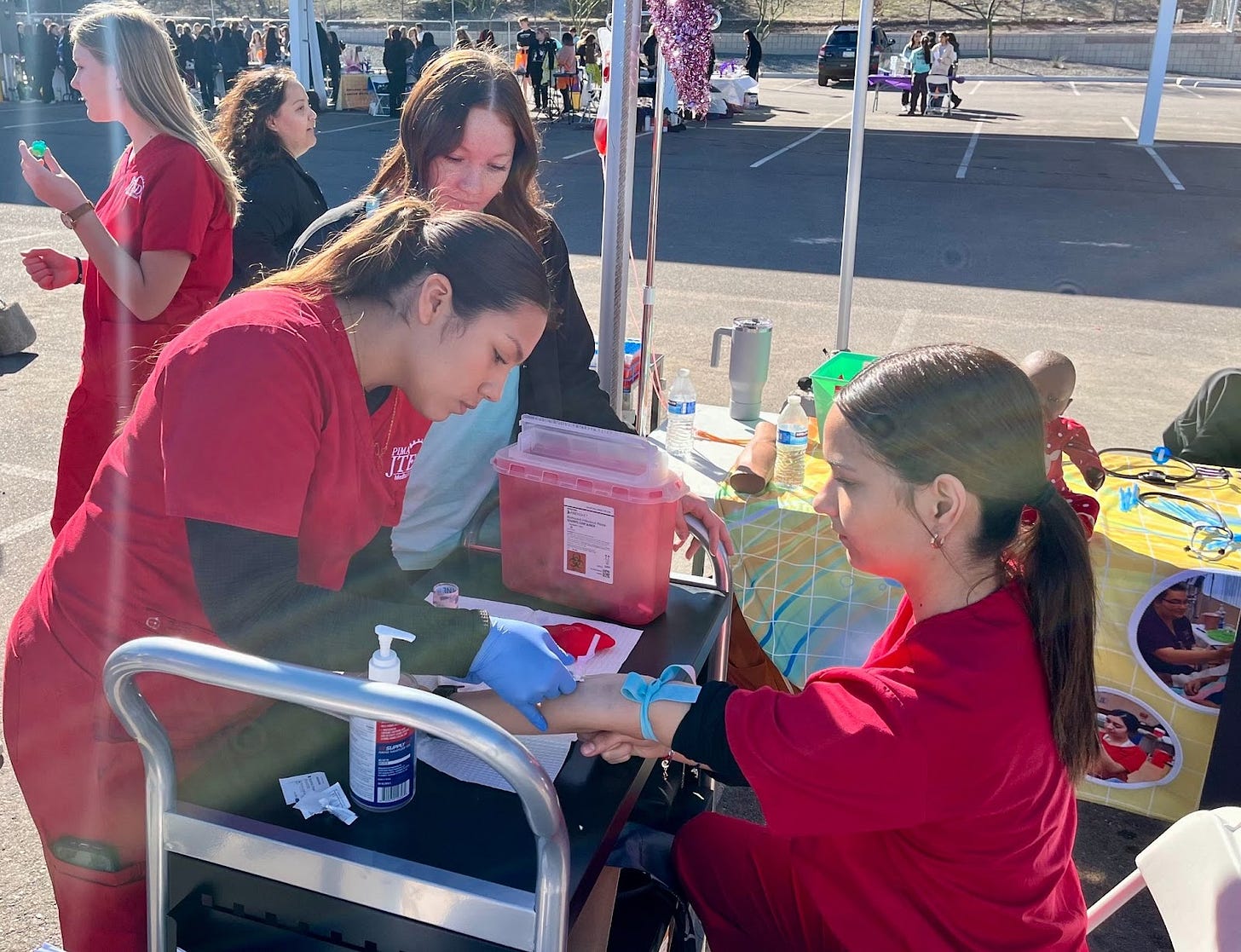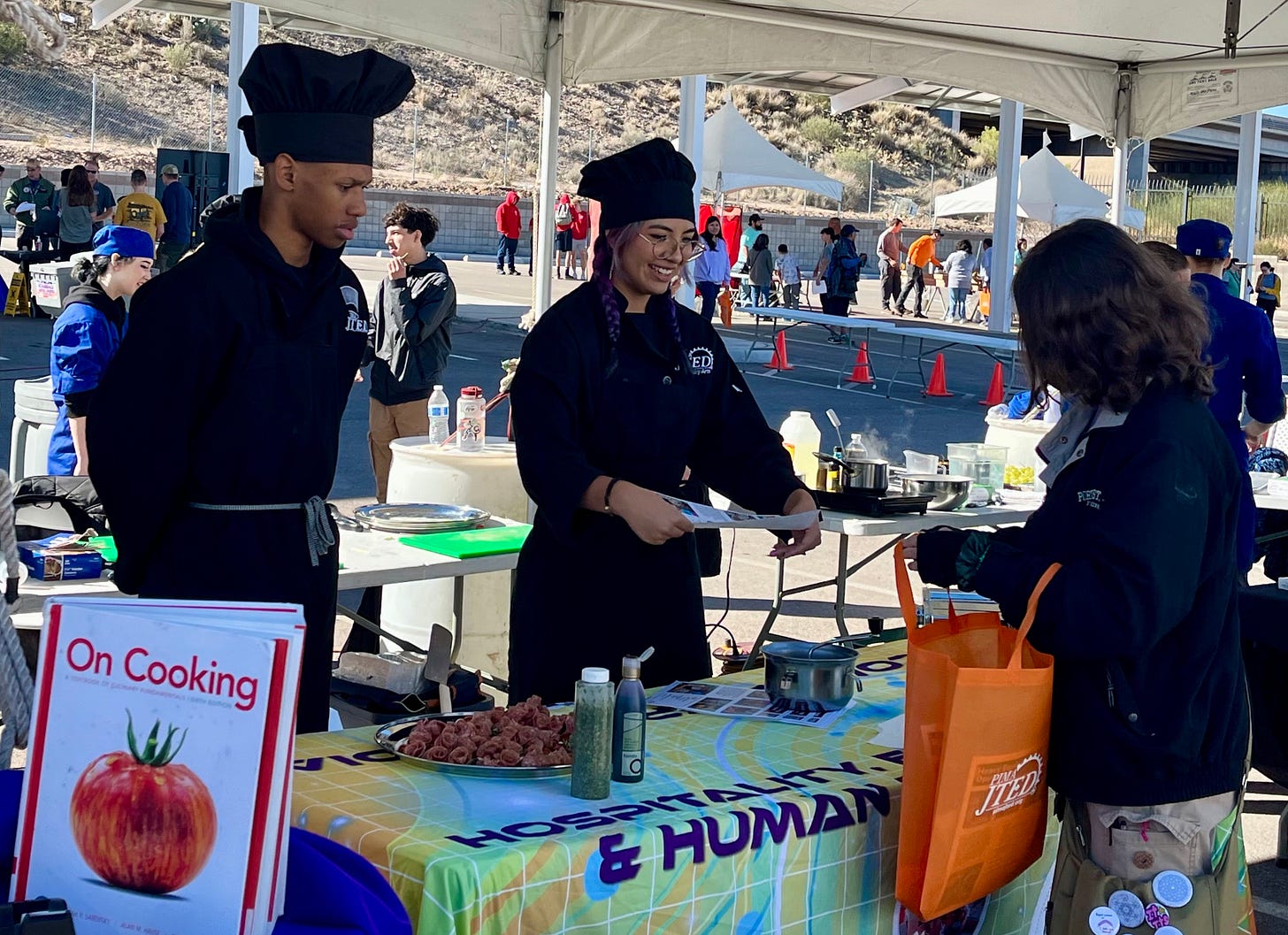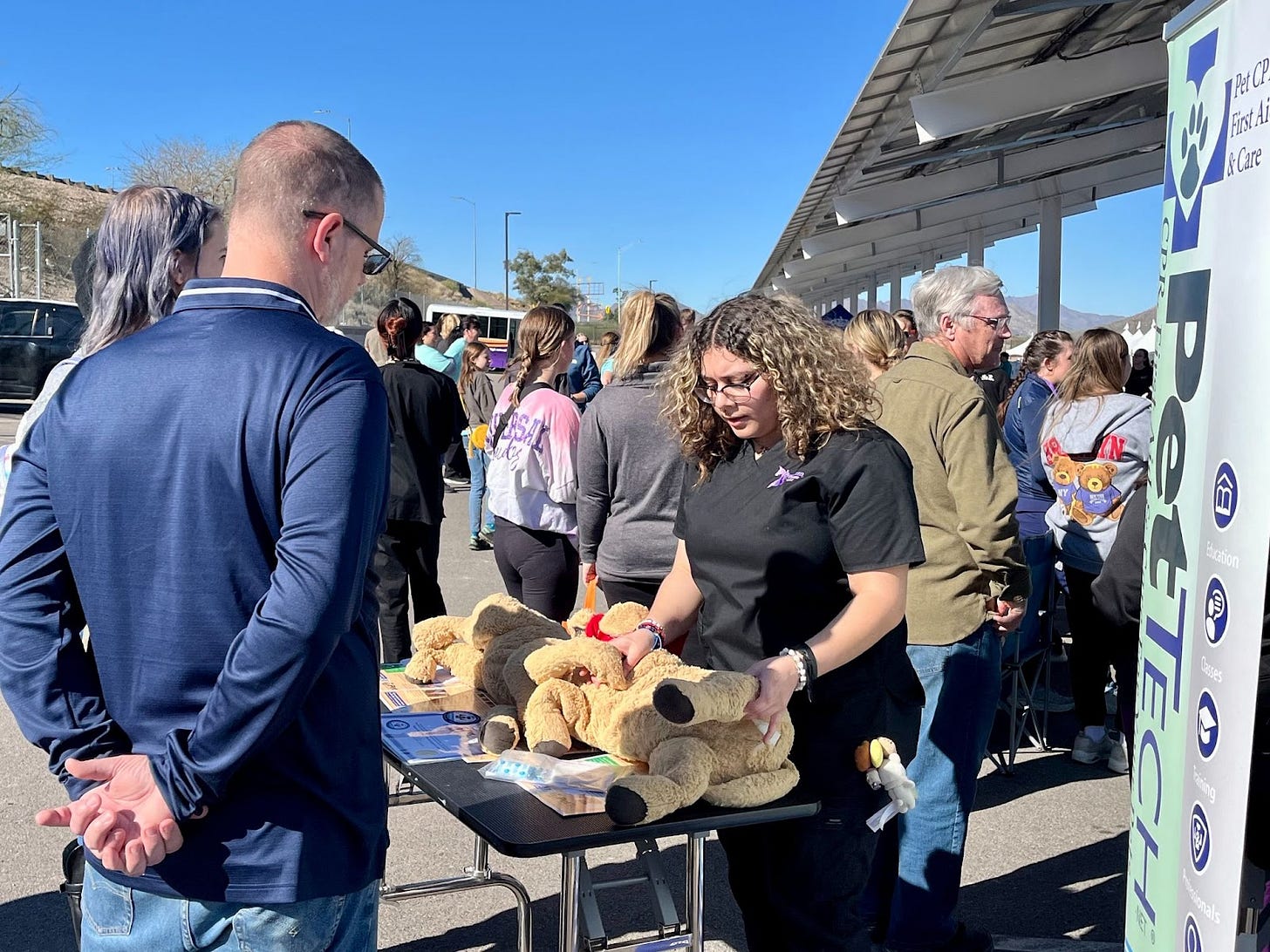The Daily Agenda: Pima JTED takes learning to the next level
Education advocates want more postsecondary opportunities for young people in Arizona … Pima JTED serves 22,000 students each years and its footprint is growing … UA president opens up.
A 2023 report found that if Arizona increased postsecondary enrollment by just 20%, the state could benefit from more than $5 billion in annual gains in the form of lifetime earnings, improved health and increased workforce productivity.
But data shows that in 2021, just 47% of high school graduates were enrolled in some kind of education or training program the year after graduation.
That’s why Pima County is trying to make it easier for high school students to get a head start on earning college credits, industry certifications and state licenses through its expanding Joint Technical Education District, more commonly known as JTED.
Pima JTED is a public high school district that collaborates with other Southern Arizona school districts to provide tuition-free career and technical education and training.
It was started in 2007 and has grown to include 14 member school districts, 15 central campuses and 31 different programs available to public, private, charter and home school students.
Each year, Pima JTED provides education and training to 22,000 high school sophomores, juniors and seniors in Pima County, Rio Rico, Nogales and Mammoth/San Manuel.

Last Saturday, hundreds of people explored JTED’s newest campus, the Innovative Learning Center at University of Arizona’s Tech Park at The Bridges, for the district’s program showcase.
The annual event gives students the opportunity to show prospective students and their families what they’ve learned.
It was also an opportunity for community members to get a sneak peek at JTED’s new Mel and Enid Zuckerman Center for Health and Medical Careers, which is slated to open July 1. The building will house a community health center, veterinary clinic and medical simulation lab.
The Innovative Learning Center is a dual-use campus. Tucson Unified School District leases 11 classrooms for its Innovation Technical High School, which had the district’s second highest ACT scores last year. Innovation High’s 340 students begin classes at 7:30 a.m. and at 3:15 p.m., JTED students take over the campus for afternoon and evening classes.
Between the two districts, 900 students are using the campus, CEO and Superintendent Kathy Prather told Caitlin during Saturday’s event. This is on top of the thousands of other students that attend classes at JTED’s other five campuses around town.

Data shows that Arizonans want to see more opportunities like the ones Pima JTED provides for its students and taxpayers.
A poll released yesterday by the nonprofit Education Forward Arizona shows residents of all political beliefs understand the value of postsecondary education for both students and communities.
It also revealed that residents want the state’s leaders to provide young people and adults with more opportunities to learn skills that will help them achieve in a career or obtain industry certification.
That demand is reflected in JTED’s growth over the years. It’s seen a steady increase in enrollment, with 18% more students in 2023-24 than the year before.
Superintendent Prather and other district officials expect the enrollment for the 2024-25 school year to be even higher, since the new medical building will be up and running by the time classes start on July 29.

Enrollment opened Monday, and within a few hours, several programs had already filled up.
Popularity varies among programs, with culinary arts, construction, welding and health and wellness typically being the favorites, but Prather said all of the programs are in high demand.
During Saturday’s showcase, the Innovation Learning Center’s massive parking lot was filled with tables, booths and demonstration areas so that attendees could get a hands-on idea of the kind of training offered.
Students from the medical assistant program excitedly recruited community members to have their blood glucose tested and practiced collecting blood specimens on each other during downtime.
Students from the culinary arts program handed out samples of gourmet creations from around the world, while just a few feet away, instructors from the heavy equipment operations program showed attendees how to operate a backhoe.
Across the lot, veterinary science student Kassandra Lopez demonstrated vitals checks and first aid techniques on a large, worn stuffed dog.

Lopez, a Desert View High School student who is in her first year of JTED’s two-year veterinary science program, said she wants to continue her education after graduation and eventually become a veterinarian or a zoologist. But until then, she’s looking forward to earning her certification as an Approved Veterinary Assistant.
“I believe it’s better than being a vet tech, because this is more hands-on,” she said.
Inside the building, 3D animation, virtual reality and game design students Olivia Piotrowsky and Ramon de la Ossa practiced for an upcoming SkillsUSA competition. Last year, Pima JTED’s team placed fourth place in the statewide competition and just five years ago, the team brought home a gold medal from nationals.
In most cases, JTED covers the cost of certification and licensing tests once a student turns 18. And in order to expand its program offering, the district partners with Pima Community College to offer several concurrent programs that net both high school and college credits, including aviation technology, HVAC, welding and more.
And while it’s hard to track how many students go onto work in their field of study, 85% of JTED students report at graduation that they’ll be continuing their education or moving onto employment.
“The students here are in our program because they want to be here. It’s by choice and by passion,” said Superintendent Prather. “This is a unique environment that takes them to the next level with their learning.”
Back of the envelope math: University of Arizona President Robert C. Robbins sat down with Arizona Daily Star reporter Ellie Wolfe this week to talk about the university’s financial crisis. Among the nuggets from the interview is the origin of the $240 million shortfall Robbins announced in November, and then UA officials tried to correct in the public conversation to the more accurate $140 million. Robbins knew the UA burned through about $6 million every day and he was told they had miscalculated their cash projections by 40 days. So, $6 million times 40 days comes to $240 million.
Financial planning: As the UA sets in motion a plan for widespread cuts to deal with its financial crisis, the Arizona Board of Regents are going to meet behind closed doors with Robbins and interim CFO John Arnold today, the Arizona Luminaria’s Carolina Cuellar reports. The meeting agenda says they will do a “review of assignments.”
Lawsuit incoming: The Goldwater Institute plans to sue Tucson over the prevailing wage ordinance the city council approved earlier this month, KJZZ’s Alisa Reznick reports. The Goldwater Institute already sued Phoenix over their prevailing wage, arguing the ordinance violates the state constitution’s due process protections. These types of ordinances were illegal for decades, but voters approved new rules for minimum wages in 2016 and that opened the door for them, Arizona Attorney General Kris Mayes says. Tucson officials cited Mayes’ opinion when drafting their ordinance.
Every little bit helps: Tucson Unified School District employees will get a stipend of up to $1,000, the Star’s Jessica Votipka reports. The TUSD governing board approved giving $1,000 stipends to full-time employees and $500 to part-time employees. The checks will go to about 8,800 employees and will be funded by $4.2 million in federal COVID relief money, which must be spent by the end of September.
Taking the next step: The Patagonia Regional Times has the details on the mining company South32 taking the next step toward building a manganese and zinc mine in the Patagonia Mountains. The company released a 215-page report on its plan of operations for the $2 billion mine as part of the federal review process.
Bus money: Arizona lawmakers put another $8 million toward busing asylum seekers from the border area to nonprofits, Cronkite News’ Lillie Boudreaux reports. The state’s program has transported more than 81,000 people since 2022. Some of them were part of the political stunt under former Gov. Doug Ducey that brought thousands of asylum seekers to cities like Washington, D.C. and New York. Since Gov. Katie Hobbs took office, about 64,000 asylum seekers were bused to in-state locations, with another 8,400 going to Washington, D.C.
$22 million: The cost of Pima JTED’s new Mel and Enid Zuckerman Center for Health and Medical Careers, which unlike many school district facilities, was not funded through bonds. Just like with JTED’s Innovative Learning Center, the new center is being paid for by sponsorships, state funding and private lenders. Superintendent Prather said JTED doesn’t pursue bonds so as not to conflict with its member school districts.
We’d love to see a bond election to fund local news, but since that’s never going to happen, we’re going to keep encouraging our free readers to update to paid subscriptions. Help keep the Agenda paywall-free!








In the same job training/access vein, take a look at JobPath! Originally organized by Pima County Interfaith after a citywide walk by almost a thousand, JobPath has emerged as a shining star in Southern Ariona. (BTW given the media obscurity of small towns like Oracle you might find frankpierson.substack.com of interest).
Thanks for highlighting the value of options and innovations in 9-12 education offered at this campus. It's also extremely important to monitor and report the transportation options - as in, will SunTran recognize the importance to the community of considering this as a mini-hub as they re-work routes?